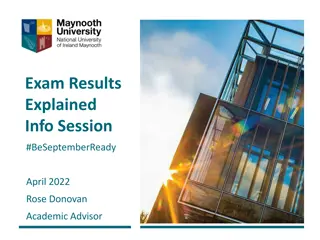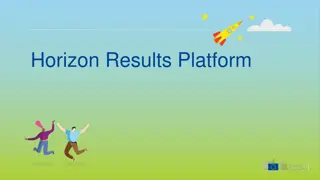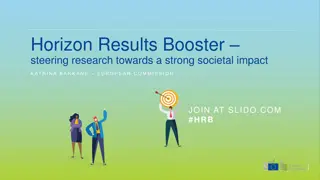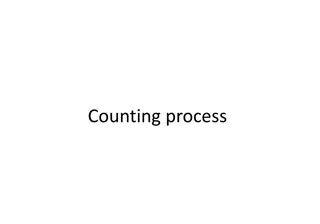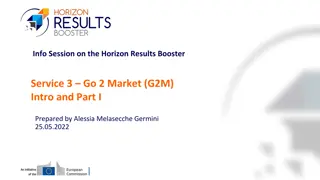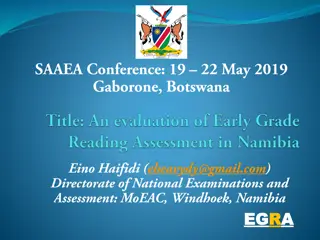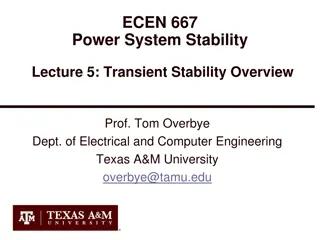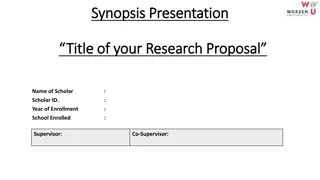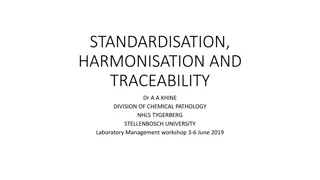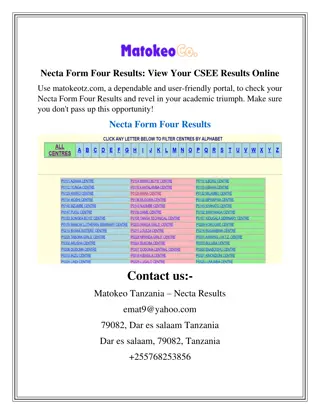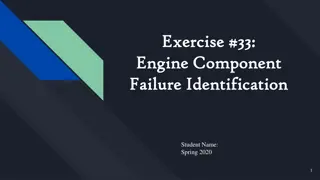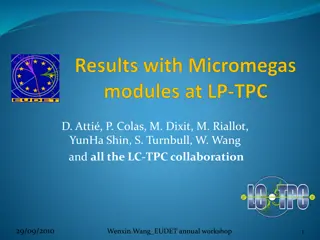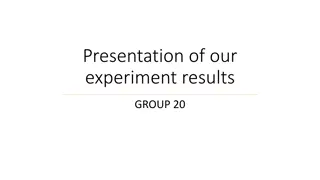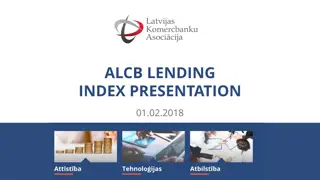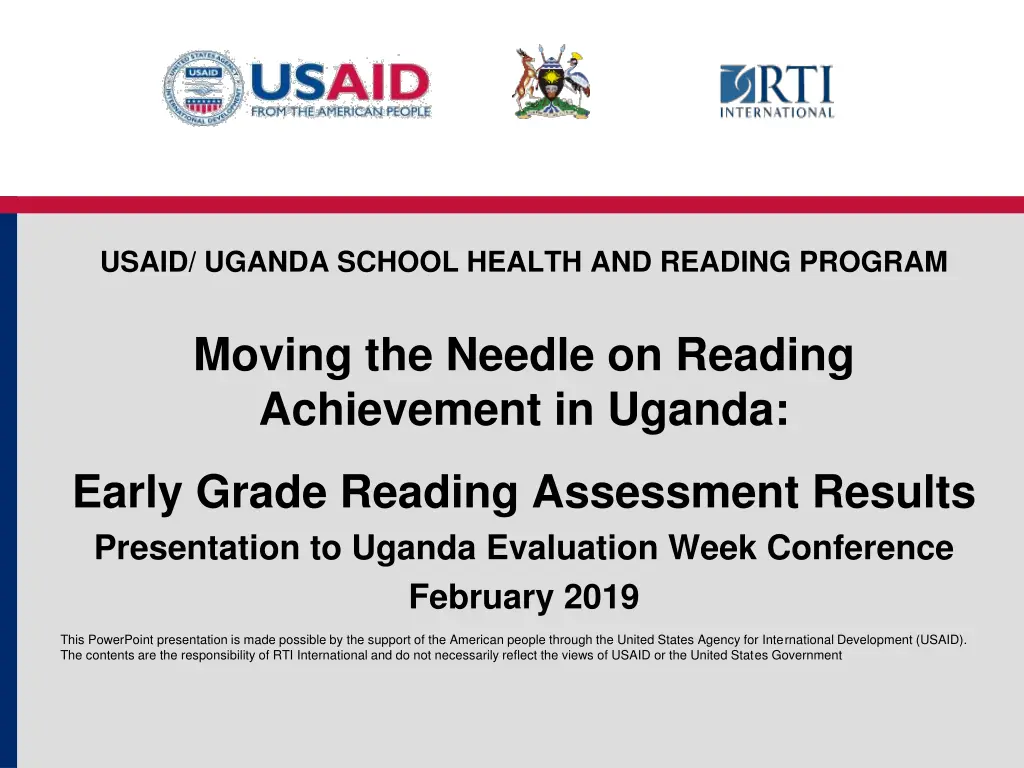
Enhancing Reading Achievement in Uganda Through Local Language Literacy Programs
Explore how the USAID/Uganda School Health and Reading Program is making significant strides in improving reading achievement in Uganda by emphasizing local language literacy for early grade learners. The program's approach includes teacher training, appropriate text selection, and continuous assessment using the Early Grade Reading Assessment tool. Discover the importance of teaching reading skills in learners' mother tongue before transitioning to English and the positive impact on literacy outcomes.
Download Presentation

Please find below an Image/Link to download the presentation.
The content on the website is provided AS IS for your information and personal use only. It may not be sold, licensed, or shared on other websites without obtaining consent from the author. If you encounter any issues during the download, it is possible that the publisher has removed the file from their server.
You are allowed to download the files provided on this website for personal or commercial use, subject to the condition that they are used lawfully. All files are the property of their respective owners.
The content on the website is provided AS IS for your information and personal use only. It may not be sold, licensed, or shared on other websites without obtaining consent from the author.
E N D
Presentation Transcript
USAID/ UGANDA SCHOOL HEALTH AND READING PROGRAM Moving the Needle on Reading Achievement in Uganda: Early Grade Reading Assessment Results Presentation to Uganda Evaluation Week Conference February 2019 This PowerPoint presentation is made possible by the support of the American people through the United States Agency for International Development (USAID). The contents are the responsibility of RTI International and do not necessarily reflect the views of USAID or the United States Government
Importance of Local Language Literacy Learning to read involves understanding the relationships between symbols, sounds, words and meanings Learners can master these reading skills more easily when they are first taught in a language that has meaning to them one they hear at home Learners can then translate these Reading skills to learn Another language, such as English Em-bwa 2
Local Language Instruction in Uganda 1992 2012 White Paper recommends use of Local Language for P1 to P3 instruction Inception of the USAID funded USAID/Uganda School Health and Reading Program 2007 NCDC introduces the Thematic Curriculum, institutionalizing LL instruction EARLY CHALLENGES Urban Schools Testing in English Disputed Orthographies 3
Early Grade Reading Programs in Uganda SCHOOL HEALTH AND READING PROGRAM 37 DISTRICTS 3,761 schools LITERACY ACHIEVEMENT AND RETENTION ACTIVITY 29 DISTRICTS 3,402 schools (overall) UGANDA TEACHER AND SCHOOL EFFECTIVENESS PROJECT (UTSEP) 27 DISTRICTS ~2,644 schools GPE FUNDED MOESTS IMPLEMENTED Build Africa
EGR Approach: The 5 Ts TIME for reading every day Teachers are trained in best TEACHINGpractices in early grades reading and provided regular monitoring and support. Appropriate Text for learners in both LL and English. Children learn to read faster and better first in their Mother Tongue and then transition to English. Testing- EGRA used to measure progress toward learning to read and teachers continually assess reading skills (learner check) 5
Testing: Early Grades Reading Assessment Early Grade Reading Assessment is used to measure children s progress toward learning to read
EGRA Methodology 14 schools randomly selected for treatment and 14 for control in each language 40 P1-P4 pupils randomly sampled at each school (20 M 20 F) 1 on 1 oral assessment Approx. 15 minutes per language 7
EGRA Methodology Intervention Clusters by Language and District Large Scale Randomized Control Trial using Early Grades Reading Assessment Ateso Cluster Languages Districts Receiving Intervention Katakwi, Kumi, Serere Leblango Apac, Kole, Lira Cluster 1 Adapted for 12 local languages (and English) 2013 Luganda Runyankore-Rukiga Gomba, Wakiso Bushenyi, Kabale, Kiruhura Leb Acoli Gulu, Kitgum, Pader Subtasks test foundational reading skills Cluster 3 2015 Ngakarimojong Lugbarati Arua Cluster 2 2014 Alphabetic Principal Phonemic Awareness Listening Comprehension Reading Comprehension Vocabulary Lumasaaba Mbale, Manafwa, Sironko Runyoro-Rutooro Kabarole, Kyenjojo, Masindi Lhukonzo Kasese Lugwere Budaka, Kibuku, Pallisa Lusoga Iganga, Kamuli To date, over 34,500 EGRA Assessments conducted Moroto, Kaabong Nakapiripirit, Napak 8
EGRA Methodology Intervention Clusters by Language and District Large Scale Randomized Control Trial using Early Grades Reading Assessment Ateso Cluster Languages Districts Receiving Intervention Katakwi, Kumi, Serere Leblango Apac, Kole, Lira Cluster 1 Adapted for 12 local languages (and English) 2013 Luganda Runyankore-Rukiga Gomba, Wakiso Bushenyi, Kabale, Kiruhura Leb Acoli Gulu, Kitgum, Pader Subtasks test foundational reading skills Cluster 3 2015 Ngakarimojong Lugbarati Arua Cluster 2 2014 Alphabetic Principal Phonemic Awareness Listening Comprehension Reading Comprehension Vocabulary Lumasaaba Mbale, Manafwa, Sironko Runyoro-Rutooro Kabarole, Kyenjojo, Masindi Lhukonzo Kasese Lugwere Budaka, Kibuku, Pallisa Lusoga Iganga, Kamuli To date, over 34,500 EGRA Assessments conducted Moroto, Kaabong Nakapiripirit, Napak 9
What does EGRA measure? EGRA measures basic skills that a child must have to be able to read fluently with comprehension- The Five Components of Literacy! Reading Skill Alphabetic principle Demonstrated via: Provide SOUND of letters Sound out or read non-words Phonemic awareness Segment words into sounds or syllables Oral reading fluency Read a passage (with speed and accuracy) Reading comprehension Answer questions about passage Vocabulary Point to body parts, objects & show direction
Research Questions Research Questions Is reading achievement increasing in School Health and Reading Program Schools? Are teachers changing the way they teach reading? Are teachers being supported in the classroom? 11
Average ENGLISH Words Read Per Minute, Cluster 1 Languages Beginning of P1 to end of P5, Program and ControlSchools (Program Schools Solid lines) 79 68 61 Luganda Program Luganda Control Leblango Program Leblango Control Ateso Program Ateso Control Runyankore-Rukiga Program Runyankore-Rukiga Control 57 52 48 35 34 35 34 31 31 20 16 17 14 17 12 10 8 8 6 4 3 BeginningP1 Feb2013 EndP1 Oct2013 EndP2 Oct2014 EndP3 Oct2015 EndP4 Oct2016 EndP5 Oct2017
Cluster 1 Percent of P5 learners reading 60+ WPM In ENGLISH 69 67 49 49 34 18 16 16 SHRP Control SHRP Control SHRP Control SHRP Control Ateso Leblango Luganda Runyankore-Rukiga
Cluster 1 Average Number of ENGLISH reading passage questions answered correctly (out of 5), End of P5 *=significant difference between treatment and control Program Control 1.9* 1.4 Ateso 1.1 1.1 Leblango 3.5* 2.6 Luganda Runyankore/Rukiga 2.4 2.3
Reading comprehension, though higher than control for some language areas, is still low due to low levels of English comprehension (learners are decoding words, but do not understand enough to be able to answer questions). Reading comprehension in the local language is significantly higher in program compared to control in all but Leblango, and much higher than Cluster 1 Average Number of ENGLISH reading passage questions answered correctly (out of 5), End of P5 *=significant difference between treatment and control Program English reading comprehension. Control 1.9* 1.4 Ateso 1.1 1.1 Leblango 3.5* 2.6 Luganda Runyankore/Rukiga 2.4 2.3
Major take away messages from EGRA results in Uganda When children learn to read (decode) in their local language, they are able to transfer this skill to decoding English. However, more work needs to be done to improve English comprehension. Although SHRP has been able to move more learners to higher reading levels and they are on their way to becoming fluent readers, there are still too many learners not acquiring foundation skills. It takes more time to move children from the zero than anticipated but when they move beyond, the gains take off as can be seen from P3 onwards. Reading gains in large scale interventions take time due to systemic and contextual challenges It is important to continually change and adapt the programs to the reality on the ground. 16


